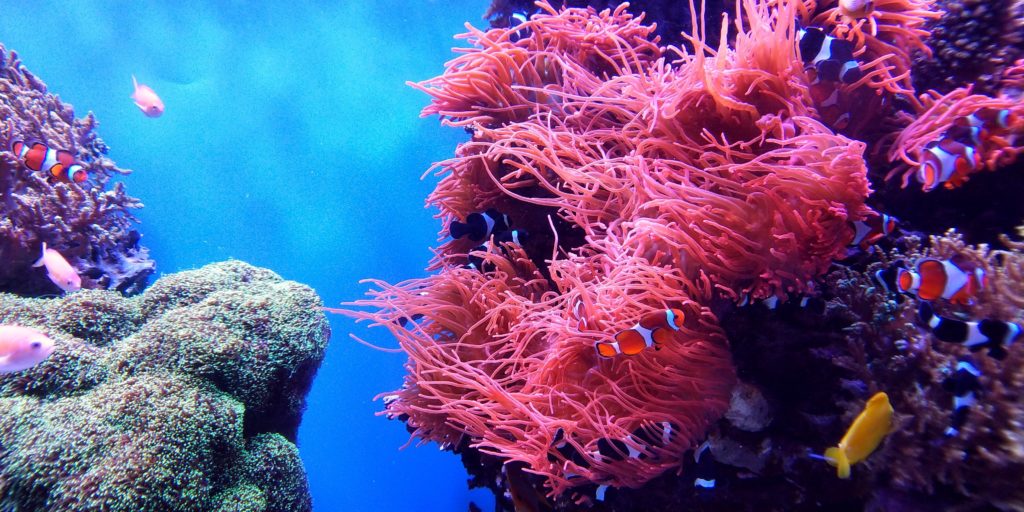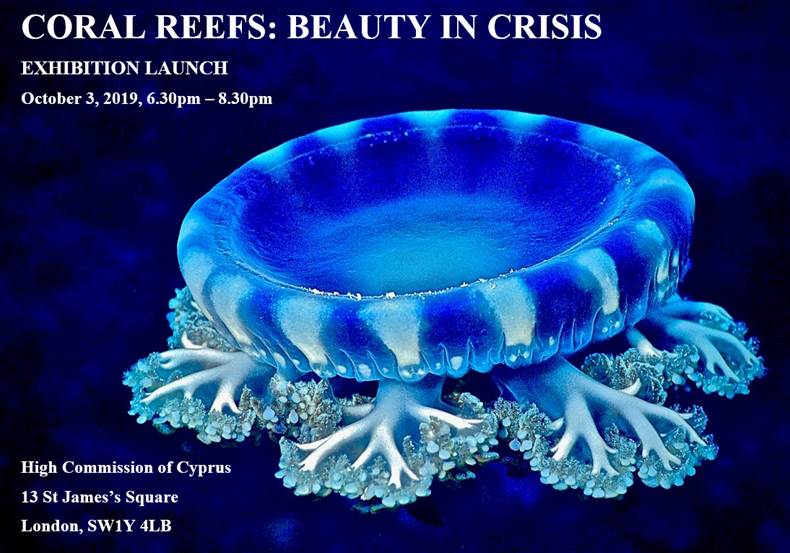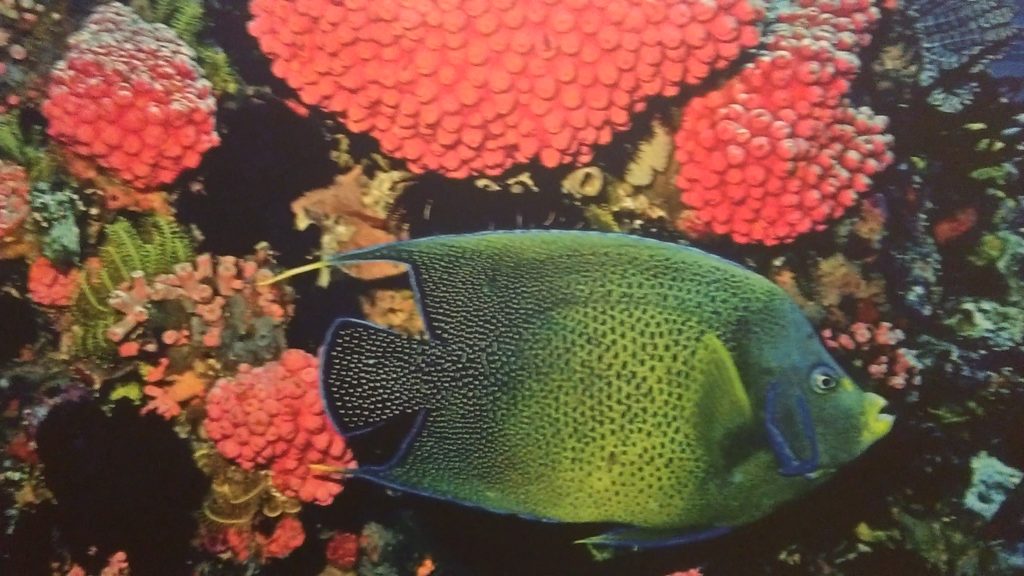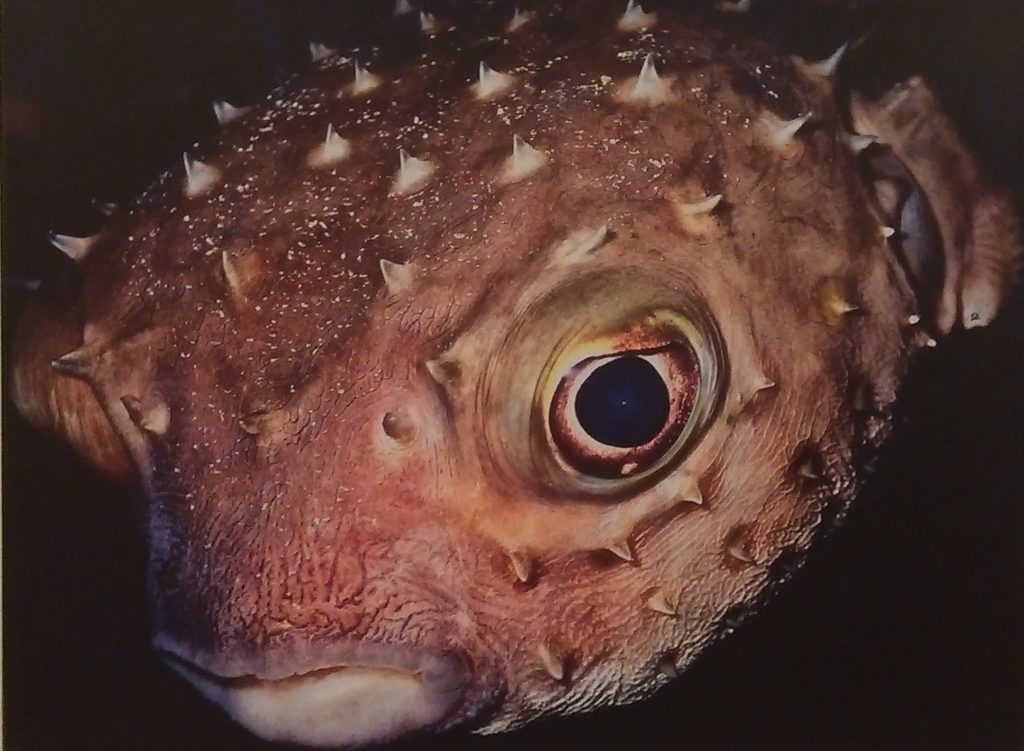
A stunning photographic exhibition by Terence Dormer aims to raise awareness of the threat to this critical ecosystem and the damage such reefs are facing.

The High Commission for the Republic of Cyprus is the London venue for this fascinating display of images organised in partnership with the Royal Commonwealth Society. Just a few minutes walk from Trafalgar Square, an exhibition space at the high commission has been filled with an array of photographs that will transport you to a captivating underwater world. The superbly displayed images have been selected from the extensive collection of Terence Dormer formed during his years of diving around the globe.
Coral reefs are the most diverse of all marine ecosystems, with 43% of global tropical coral reefs occurring within Commonwealth jurisdictions. Covering less than 1% of the ocean floor, they support an estimated 25% of all marine life. Because they are so diverse coral reefs are often called the rainforests of the sea.
Terence Dormer’s wonderful collection of underwater images fittingly captures the beauty of this submerged world of dramatic and intriguing arrays of colours, shapes and features. Especially useful are the extended captions accompanying each image that explain the mysteries of this delicate world.

Very sadly, 50% of the world’s reefs have already suffered irreversible damage and urgent action is needed to protect these vibrant underwater habitats from the effects of climate change, pollution, over-fishing and other problems caused by humans – such as cyanide fishing, coral mining and poor tourism practices.
The photographs on display vividly demonstrate what the world will lose if the coral reefs continue to be destroyed. One cannot help but be impressed and astonished at the beauty captured by Dormer. A series of images titled The Mantles of Giant Clams show the coloured patterns formed by colonies of symbiotic algae in the mantles of the clams. The caption explains that in exchange for a safe place to live, the algae provide the clams with sugar and oxygen through photosynthesis. These intriguing images have an almost psychodelic quality.

The image titled Sawtooth Featherstar is equally impressive. Featherstars favour areas which have frequent currents, into which they can extend their many arms in order to feed on passing microplankton. When there is still water, feeding is impracticable and they fold their arms inwards. The caption notes the aesthetically pleasing pattern that forms.
‘Coral Reefs: Beauty in Crisis’ masterfully uses art to highlight the very important environmental and economic value of coastal ecosystems. They play a pivotal role in many Commonwealth countries, by supporting tourism, food security and recreation, and by offering coastal protection from storms. According to the Royal Commonwealth Society, Australia’s Great Barrier Reef supports 64,000 jobs and generates $6.4 billion each year for the country’s economy. Some 250 million people – many in small island states and developing countries – depend directly on coral reefs for food and income, making them particularly vulnerable to their loss.
It was noted at the launch of the exhibition that Dormer appeared to be ‘ahead of the curve’ by highlighting the plight of coral reefs over many years. Writing for a Commonwealth publication in 2016, Dormer offered a compelling narrative on the significance of the ‘rainforests of the sea’: ‘Coral reefs cover hundreds of thousands of square kilometres and are believed to be the habitats of over a million species. Made by billions of tiny animals, they build vast communal calcareous skeletons, some of which are so large that they can be seen from space, as in the case of Australia’s Great Barrier Reef.’
The former Commonwealth official also wrote of his understanding of how the loss of coral reefs speak to a wider ecological problem facing the entire planet and are ‘key indicators’ of climate change: ‘Of course, the study and preservation of such reefs, while exceedingly important, must be seen within the context of the whole complex subject of the human impact on climate change. The facts are increasingly clear. If current trends continue, most reports suggest that a period of rapid temperature increase will result in catastrophic effects during this century. If planetary temperatures rise by 4 centigrade degrees or more, all the available evidence suggests that the provision of food and water for the majority of the world’s population will become increasingly difficult.’
‘Coral Reefs: Beauty in Crisis’ offers us a window into the incredible underwater world that Dormer has explored over the decades and makes a creative contribution to highlighting the need for effective action to safeguard such vulnerable ecosystems. The free exhibition will run until Friday, 11 October 2019 and is open to members of the public.
The photographs from the exhibition are available for purchase and the proceeds will support the charitable work of the Royal Commonwealth Society in promoting the value and the values of the Commonwealth – protecting the environment for future generations being one of our core areas of work.










